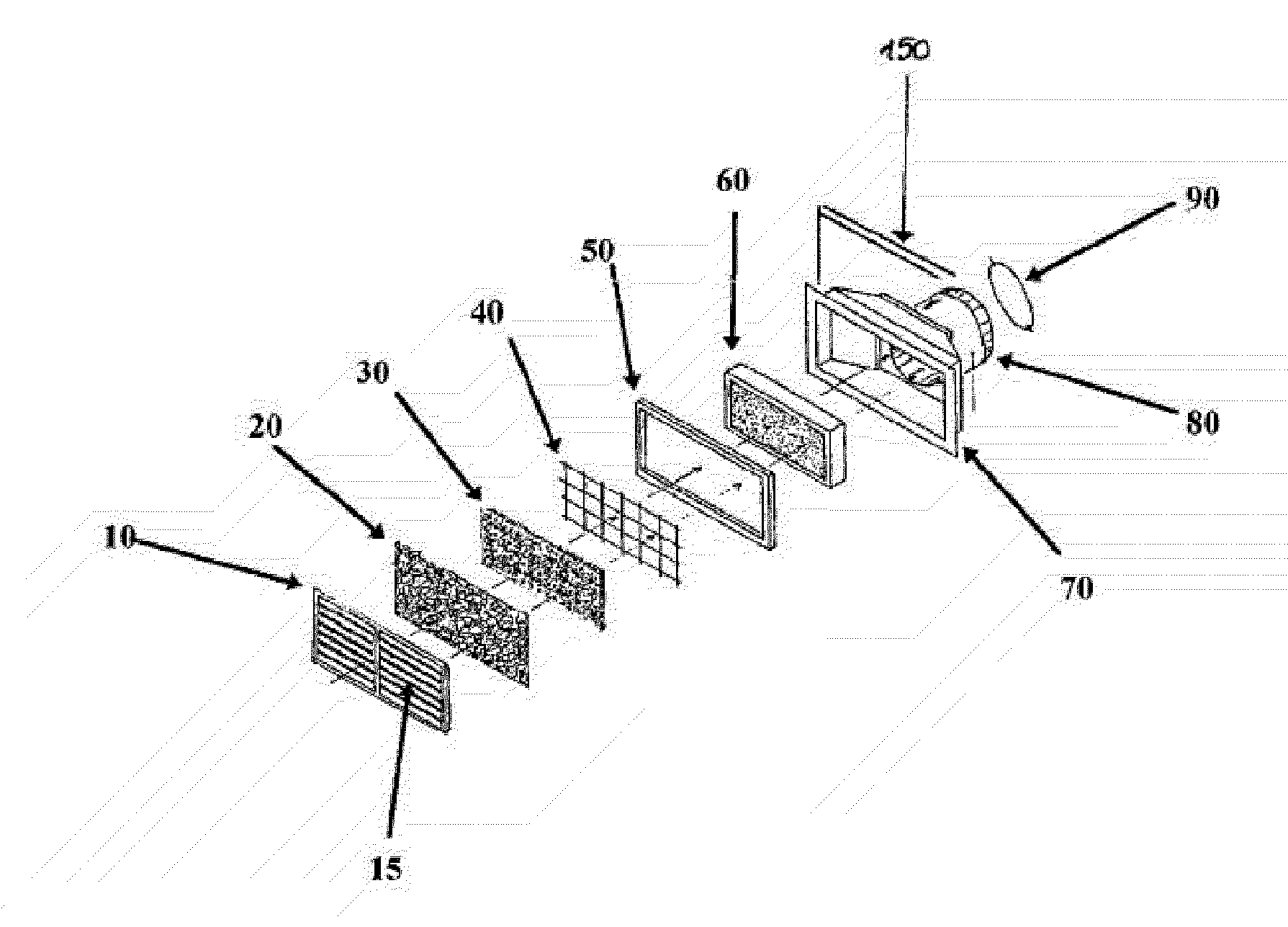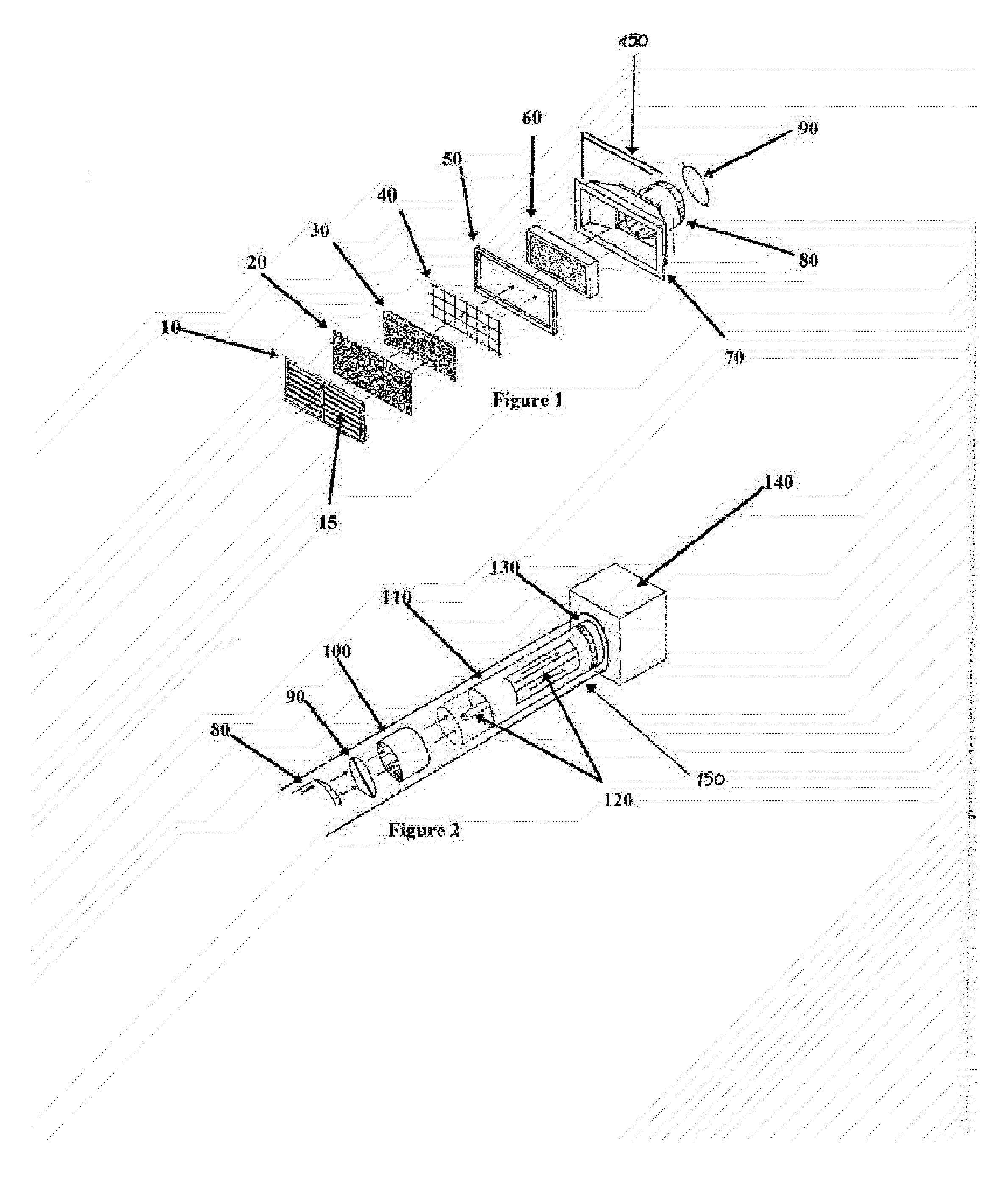Fresh Air Intake System
a fresh air intake and air technology, applied in ventilation systems, lighting and heating apparatus, heating types, etc., can solve the problems of poor door and window seals, poor air infiltration, and poor air infiltration of fresh air, so as to inhibit air infiltration and improve indoor air quality
- Summary
- Abstract
- Description
- Claims
- Application Information
AI Technical Summary
Benefits of technology
Problems solved by technology
Method used
Image
Examples
Embodiment Construction
[0027]FIG. 1 shows the filter components of the present invention in order of assembly. Exterior aluminum grill (10) is the outer most component. The fresh air flow is directed into the exterior aluminum grill (10) between the numerous vented slats (15) horizontally placed in the exterior aluminum grill (10). Just behind the exterior aluminum grill (10) is the carbon pre filter (20) which is made of polyester and carbon is used to arrest a 85% of the particles ≧5 micron and absorb gasses, such as ozone and auto exhaust, and chemicals from landscape fertilizers and pesticides. Next is the electrostatic filter cloth (30). The electrostatic filter cloth (30) is reusable and has anti-microbial properties combined with low airflow resistance and high particle capture ability. A wire mesh (40) is then place behind the electrostatic filter cloth (30) to secure the carbon pre filter (20) and the electrostatic filter cloth (30) in place. A metal aluminum frame (50) secures the metal mesh (40...
PUM
 Login to View More
Login to View More Abstract
Description
Claims
Application Information
 Login to View More
Login to View More - R&D
- Intellectual Property
- Life Sciences
- Materials
- Tech Scout
- Unparalleled Data Quality
- Higher Quality Content
- 60% Fewer Hallucinations
Browse by: Latest US Patents, China's latest patents, Technical Efficacy Thesaurus, Application Domain, Technology Topic, Popular Technical Reports.
© 2025 PatSnap. All rights reserved.Legal|Privacy policy|Modern Slavery Act Transparency Statement|Sitemap|About US| Contact US: help@patsnap.com



